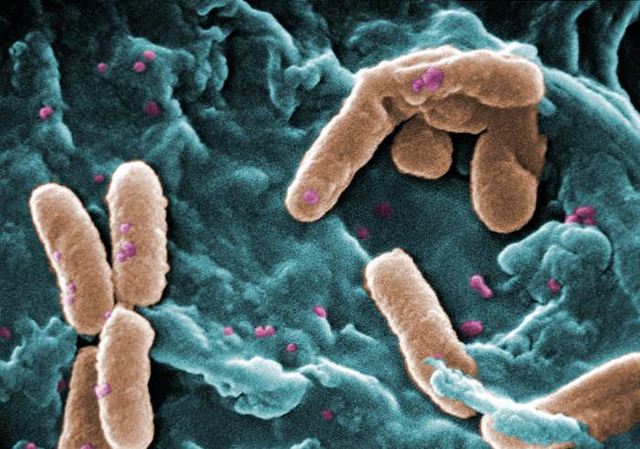The language of biofilms

Every once in awhile, communities form. Collections of similar or diverse things come together, and in unison strive for a common goal. It is the same for mice, men, and bacteria. Humans do it and build nations. Bacteria do it and build biofilms.
Dental plaque, the slimy coating on pipes and tanks, algal mats on a still lake — are all different types of biofilms. Biofilms for us are a nuisance because they colonise medical devices implanted in the human body. They can be used, however, in treating sewage, industrial waste, or contaminated soil.
When a biofilm forms, it is far from random. At its leading edge — the biofilm has purpose and direction. Imagine it as an invading army sending out the vanguards toward an unexplored territory. Highly coherent groups of bacteria migrate across the surface — swarming as one. As they advance, they create furrows for those bacteria at the back to follow. The vanguards carve out a network of trails — one that will eventually guide the exodus — the mass transit of following bacteria towards the leading edges of the biofilm.
Pseudomonas aeruginosa — the bacteria they use to eat up oil spills — is able to colonise many natural and artificial environments. It thrives on most surfaces, and easily causes a problem for implanted medical equipment like catheters. Individual bacteria show distinctive multicellular behaviour. When they grow, patterns and order emerge from seeming chaos. Australian scientists, publishing in the Proceedings of the National Academy of Sciences, describe the methods they used to visualise movements of individual bacteria, and to characterise the order within. Researchers had to develop sophisticated computer algorithms to visualise, identify and track individual bacteria. Carrying out a time lapse recording of bacteria at one frame every 2 seconds, and visually inspected a 1000-frame time series (download the movie).
As the bio
 Follow
Follow